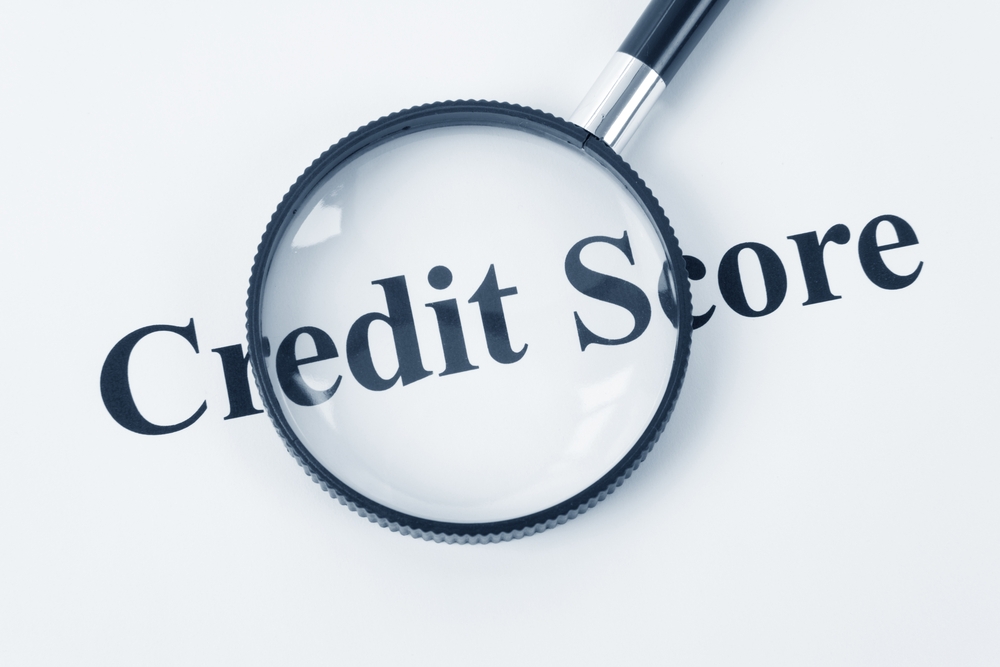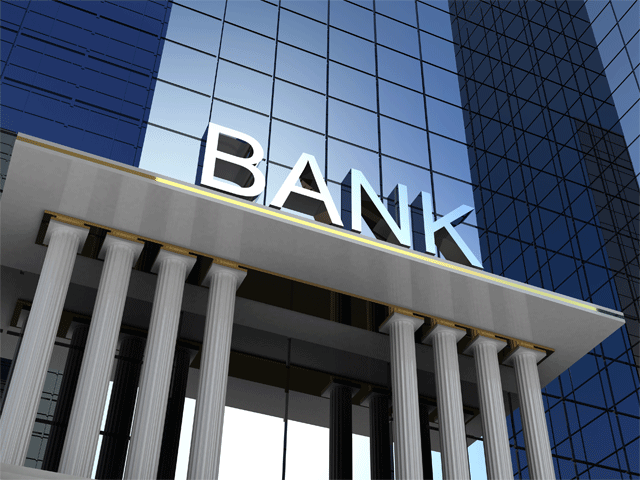As countries go into lockdown due to COVID-19, people are forced to keep social distance and work from home. This crisis highlights how important digital capabilities are and products are, and how important speed and seamless integration are. While it is not possible to completely digitize all business sectors, however, complete digitization of certain financial… Continue reading A Paradigm Shift: Contactless Lending in a Contactless World
Month: May 2020
How we practice our values on a regular basis

Every company has it’s values. You would have seen this on their orientation presentation or on wallpaper at the office reception area and other locations around the office. We also know that having those values projected on walls and on slides doesn’t mean anything. Guess where this is from? These were the values that were… Continue reading How we practice our values on a regular basis
SME lenders already know that the market offers a huge opportunity, but also know that it’s incredibly difficult to drive high approval rates without increasing risk. Finding the technology, implementing your risk strategy and effectively wrangling the risks in an ever-evolving industry is a big challenge.Here Credit scoring models provide an opportunity for lenders to more efficiently evaluate loan risks and lower the costs of small-business lending.
Scoring Model: Learn from the past and anticipate future
Scoring Models help lenders in emerging markets standardize and improve their lending decisions. These models define customer scoring based on a statistical analysis of past borrowers’ characteristics instead of using judgmental rules.
- Credit Scores – a number that represents an assessment of the creditworthiness of a person, or the likelihood that the person will repay a loan.
- By analyzing a sample of historical client and business data, trends are deduced to better understand (potential) clients and predict future events such as credit repayment.
- Scoring is a method of assigning a numerical value (the “score”) to a client in order to predict how likely he or she is relative to others to experience some event or perform some action in the future. This is predicated on the notion that past behavior is indicative of future behavior for populations with similar characteristics.
Credit Scoring may alter small-business lending in several ways:
Borrower-Lender Interaction: Traditionally, a small-business need to meet with a loan officer in person and apply, including financial statements, business plans and a variety of other records. In fact, by using a credit-scoring system, a lender with no physical presence in a community can lend money to small businesses without ever seeing a business plan or financial statements.
Loan Pricing: The price of small-business loans will decline for higher-credit quality borrowers under credit scoring because these borrowers no longer have to bear the cost of a full human underwriting. Some businesses that previously had been thought to be high risk under a traditional underwriting system may be classified as lower risk under a credit scoring system.
Availability of Credit for Small Business: Repayment prospects of a small-business applicant makes it more likely that a lender will price the loan according to its expected risk. This prospect should increase the availability of credit to small businesses.
Increased Lending Opportunities: Lenders who use credit scores have the confidence to approve more loans, because credit scoring gives them more precise information on risk and other credit factors.
Fair Credit decisions: Using objective credit scoring, lenders can focus only on the facts related to credit risk, rather than their personal feelings. Factors like your gender, race, religion, nationality and marital status are not considered by credit scoring
For the lender, scoring leads to process automation, which facilitates process improvements, leading to many byproducts such as improved management information, control and consistency. It also increases the profitability of SME lending by reducing the time and cost required to approve loans and increasing revenues by expanding lending opportunities and service levels.
For evaluating loan proposals and for facilitating SME financing, firms would need to employ low-cost and quick decision-making alternatives. The use of credit scoring models can go a long way in facilitating lending decisions by reducing costs and increasing service levels.
Financial sector is becoming increasingly competitive and facing several threats from various areas. Threats like, those coming from regulators, the expectations of investors, emergence of new competitors, expectation of customers who expect to access funds and make loan requests through a multitude of digital channels, all put the lenders in weak position.
Smart lenders minimize their risk by knowing exactly what they are getting into, and how predictable they can forecast activity on the loans. To boost the quality of the overall loan portfolio, lending firms need to reset their value focus and digitize their credit risk process.
Digitization offers huge potential to improve credit risk management. It is likely to result in more transparency of risk assessment. It allows lenders to make rapid assessments of the credit worthiness of applicants quickly.
Digital trends in financial industry
- Changing customer expectations
- Tighter regulatory control requiring greater risk function effectiveness
- Growing importance of strong data management and advanced analytics in staying competitive
- New attackers driving business-model disruptions
- Increasing pressure, especially from financial-technological companies, on costs and returns
Digitizing credit risk management allows lending firms to withstand new pressures and create value. It can bring value in areas like sales and planning, mortgage process and insight and analysis. Digital credit risk management uses automation, connectivity and digital delivery and decision making to create values in protecting revenue, reduce cost of risk mitigation and reduce operational cost.
Lenders are beginning to respond to these trends, albeit slowly.
Analytics in enabling “digital credit risk”
To stay competitive, banks need to use data and analytics effectively to gain insights. Analytical techniques enable the implementation of credit strategies and workflows for decisions and risk monitoring. While analytics provide deep insights about customers’ behavior, it also apprises financial institutions with factors that have influenced their changing buying patterns and habits.
Predictive analytics can enable credit managers to reduce the lending risk by making data driven decisions. Using statistics and machine learning techniques, they can analyze the data available from various sources to create credit scoring models on their own, specific to their business. These models incorporate financial and non-financial data such as demographic and profile information to do forward-looking analysis of the probability of default for a borrower over various time frames, and calculate the potential expected loss in case of default.
In fact, Predictive analytics can be utilized to improve the customer experience throughout the loan life cycle. Marketing departments can benefit through improved targeting in their campaigns, and credit risk departments can create scorecards to make more informed decisions on whether or not to accept an application. Opportunities for cross-sell and up sell can also be identified by analyzing the behavior of existing customers and by assessing the risk of default, proactive actions can be taken to mitigate the risk early. Collection analytics can predict the likelihood of delinquent customers paying back the debt and the right channel to reach out to these customers. This would not only help in increasing the interest revenue, but also in reducing the collection costs.
Digitizing credit risk management allows lending firms to withstand new pressures and create value. It can bring value in areas like sales and planning, mortgage process and insight and analysis. Digital credit risk management uses automation, connectivity and digital delivery and decision making to create values in protecting revenue, reduce cost of risk mitigation and reduce operational cost.
Monthly Newsletter | May 2020 | Issue 105
Featuring
- Impact of digitization in credit risk management
- Credit Scoring Model: an effective tool to evaluate loan risk
- In the News
- Major Events
- Key Stats
Focus On
Impact of Digitization in Credit Risk Management
The financial sector is witnessing a rising tide of competition and encountering numerous threats from different fronts, including regulators, investor expectations, the emergence of new competitors, and customer demands for accessing funds and submitting loan requests through diverse digital channels. These factors collectively contribute to the lenders’ vulnerability, particularly in managing credit risk.
Smart lenders minimize their risk by knowing exactly what they are getting into, and how predictable they can forecast activity on the loans. To boost the quality of the overall loan portfolio, lending firms need to reset their value focus and digitize their credit risk process.
Digitalization offers huge potential to improve credit risk management. It is likely to result in more transparency of risk assessment. It allows lenders to make rapid assessments of the credit worthiness of applicants quickly.
Digital trends in financial industry
- Changing customer expectations
- Tighter regulatory control requiring greater risk function effectiveness
- Growing importance of strong data management and advanced analytics in staying competitive
- New attackers driving business-model disruptions
- Increasing pressure, especially from financial-technological companies, on costs and returns
Digitizing credit risk management allows lending firms to withstand new pressures and create value. It can bring value in areas like sales and planning, mortage process and insight and analysis. Digital credit risk management uses automation, connectivity and digital delivery and decision making to create values in protecting revenue, reduce cost of risk mitigation and reduce operational cost.
Lenders are beginning to respond to these trends, albeit slowly.
Analytics in enabling “digital credit risk”
To stay competitive, banks need to use data and analytics effectively to gain insights. Analytical techniques enable the implementation of credit strategies and workflows for decisions and risk monitoring. While analytics provide deep insights about customers’ behavior, it also apprises financial institutions with factors that have influenced their changing buying patterns and habits.
Predictive analytics can enable credit managers to reduce the lending risk by making data driven decisions. Using statistics and machine learning techniques, they can analyze the data available from various sources to create credit scoring models on their own, specific to their business. These models incorporate financial and non-financial data such as demographic and profile information to do forward-looking analysis of the probability of default for a borrower over various timeframes, and calculate the potential expected loss in case of default.
In fact, Predictive analytics can be utilized to improve the customer experience throughout the loan lifecycle. Marketing departments can benefit through improved targeting in their campaigns, and credit risk departments can create scorecards to make more informed decisions on whether or not to accept an application. Opportunities for cross-sell and upsell can also be identified by analyzing the behavior of existing customers and by assessing the risk of default, proactive actions can be taken to mitigate the risk early. Collection analytics can predict the likelihood of delinquent customers paying back the debt and the right channel to reach out to these customers. This would not only help in increasing the interest revenue, but also in reducing the collection costs.
Digitizing credit risk management allows lending firms to withstand new pressures and create value. It can bring value in areas like sales and planning, mortage process and insight and analysis. Digital credit risk management uses automation, connectivity and digital delivery and decision making to create values in protecting revenue, reduce cost of risk mitigation and reduce operational cost.
Keep Reading
Credit Scoring Model: an effective tool to evaluate loan risk
SME lender already know that the market offers a huge opportunity, but also know that it’s incredibly difficult to drive high approval rates without increasing risk. Finding the technology, you need to implement your risk strategy and effectively wrangle the risks of SME lending in an ever-evolving industry is a challenge.
Here Credit scoring models provide an opportunity for lenders to more efficiently evaluate loan risks and lower the costs of small-business lending.
Scoring Model: Learn from the past and anticipate future
Scoring Models help lenders in emerging markets standardize and improve their lending decisions. These models define customer scoring based on a statistical analysis of past borrowers’ characteristics instead of using judgmental rules.
- Credit Scores – a number that represents an assessment of the creditworthiness of a person, or the likelihood that the person will repay a loan.
- By analyzing a sample of historical client and business data, trends are deduced to better understand (potential) clients and predict future events such as credit repayment.
- Scoring is a method of assigning a numerical value (the “score”) to a client in order to predict how likely he or she is relative to others to experience some event or perform some action in the future. This is predicated on the notion that past behavior is indicative of future behavior for populations with similar characteristics.
Credit Scoring may alter small-business lending in several ways:
Borrower-Lender Interaction: Traditionally, a small-business need to meet with a loan officer in person and apply, including financial statements, business plans and a variety of other records. In fact, by using a credit-scoring system, a lender with no physical presence in a community can lend money to small businesses without ever seeing a business plan or financial statements.
Loan Pricing: The price of small-business loans will decline for higher-credit quality borrowers under credit scoring because these borrowers no longer have to bear the cost of a full human underwriting. Some businesses that previously had been thought to be high risk under a traditional underwriting system may be classified as lower risk under a credit scoring system.
Availability of Credit for Small Business: Repayment prospects of a small-business applicant makes it more likely that a lender will price the loan according to its expected risk. This prospect should increase the availability of credit to small businesses.
Increased Lending Opportunities: Lenders who use credit scores have the confidence to approve more loans, because credit scoring gives them more precise information on risk and other credit factors.
Fair Credit decisions: Using objective credit scoring, lenders can focus only on the facts related to credit risk, rather than their personal feelings. Factors like your gender, race, religion, nationality and marital status are not considered by credit scoring
For the lender, scoring leads to process automation, which facilitates process improvements, leading to many byproducts such as improved management information, control and consistency. It also increases the profitability of SME lending by reducing the time and cost required to approve loans and increasing revenues by expanding lending opportunities and service levels
Get insights to stay ahead in lending industry
Insights delivered monthly !
In the News
US Banks tightened loan sanction in first quarter
Loan officers at US banks reported significantly tightening standards and terms on business loans in the first three months of the year as the coronavirus outbreak in the United States began to shutter large parts of the economy and millions became newly unemployed.
The officers also said that there was greater demand for business loans from medium- and large-sized firms, but that business loan demand from small businesses was roughly unchanged.
Banks reported tightening standards across all three consumer loan categories — credit card loans, auto loans, and other consumer loans – but saw weaker demand for them during the same period. “Banks reported that the changes in standards and demand across loan categories reported for the first quarter occurred late in March as the economic outlook shifted when news emerged about the rapid global spread of COVID-19,” the US central bank said in its quarterly survey, referring to the respiratory disease caused by the virus.
The latter half of March was when US states and local governments shut non-essential businesses and issued “stay-at-home” orders to limit the spread of the virus. Since then, such businesses have struggled to stay afloat, leading to actions by US lawmakers and the Federal Reserve to try and limit the fallout and stave off a wave of bankruptcies.
The US Small Business Administration has processed over 3.8 million loans for more than half a trillion dollars since the launch of the Paycheck Protection Program on April 3, the government agency said on Sunday. The program is designed to provide forgivable, government-guaranteed loans to small businesses shuttered by the outbreak. The central bank said last week it would soon open its “Main Street Lending Facility,” with US$600 billion in loans available to companies with up to 15,000 employees and $5 billion in revenue.
Since early March, the Fed has pumped trillions into US financial markets to try and keep credit flowing to businesses and households. It has launched numerous crisis-fighting programs, slashed interest rates to near zero and resumed large-scale asset purchases.
US banks previously reported keeping loan standards mostly unchanged for many business loans and commercial real estate loans in the fourth quarter of last year.
In tightening standards, loan officers cited a deteriorating or more uncertain economic outlook, a worsening of industry-specific problems, and reduced tolerance for risk. They also said because of the coronavirus outbreak they “were focused on existing clients rather than granting loans to new clients.”The Fed surveyed loan officers at 67 domestic banks and 22 US branches and agencies of foreign banks
New AI Banking solution rolled out to accelerate SME finance
Loan officers at US banks reported significantly tightening standards and terms on business loans in the first three months of the year as the coronavirus outbreak in the United States began to shutter large parts of the economy and millions became newly unemployed.
The officers also said that there was greater demand for business loans from medium- and large-sized firms, but that business loan demand from small businesses was roughly unchanged. Banks reported tightening standards across all three consumer loan categories — credit card loans, auto loans, and other consumer loans – but saw weaker demand for them during the same period. “Banks reported that the changes in standards and demand across loan categories reported for the first quarter occurred late in March as the economic outlook shifted when news emerged about the rapid global spread of COVID-19,” the US central bank said in its quarterly survey, referring to the respiratory disease caused by the virus.
The latter half of March was when US states and local governments shut non-essential businesses and issued “stay-at-home” orders to limit the spread of the virus. Since then, such businesses have struggled to stay afloat, leading to actions by US lawmakers and the Federal Reserve to try and limit the fallout and stave off a wave of bankruptcies.
The US Small Business Administration has processed over 3.8 million loans for more than half a trillion dollars since the launch of the Paycheck Protection Program on April 3, the government agency said on Sunday. The program is designed to provide forgivable, government-guaranteed loans to small businesses shuttered by the outbreak. The central bank said last week it would soon open its “Main Street Lending Facility,” with US$600 billion in loans available to companies with up to 15,000 employees and $5 billion in revenue.
Since early March, the Fed has pumped trillions into US financial markets to try and keep credit flowing to businesses and households. It has launched numerous crisis-fighting programs, slashed interest rates to near zero and resumed large-scale asset purchases. US banks previously reported keeping loan standards mostly unchanged for many business loans and commercial real estate loans in the fourth quarter of last year.
In tightening standards, loan officers cited a deteriorating or more uncertain economic outlook, a worsening of industry-specific problems, and reduced tolerance for risk.They also said because of the coronavirus outbreak they “were focused on existing clients rather than granting loans to new clients.”
The Fed surveyed loan officers at 67 domestic banks and 22 US branches and agencies of foreign banks
Aus Fintechs team up to launch investment platform
Three fintechs have joined forces to develop a wealth platform for the Australian market, with a former Citi banker having signed on as its chief. The new platform, Stropro, has been launched with backing from Seed Space, an early-stage venture capitalist. Stropro has leveraged partnerships with anti-money laundering compliance tool provider bronID, registry services provider Automic Group and technology solutions vendor eNoah iSolution.
Stropo has marketed itself as Australia’s first dedicated network for structured products.
Ex-Citi banker Anto Joseph has taken the role of fronting the platform, as its chief executive. Mr Joseph said the fintech set a goal in early 2019 to deliver an end-to-end digital experience for structured product investors.
“After working in investment banking for many years, we saw a huge gap in the market for structured products to be accessed by wholesale investors, SMSFs and the wealth professionals who advise them,” he said.
“What we have created is a first-of-its-kind technology platform dedicated to structured products in Australia.”
The platform’s user interface was designed by Justin Hall of eNoah iSolution. Stropo has also been fully integrated with Automic and bronID, with the aim to enable seamless customer onboarding and experience.
But the platform is angling to integrate itself with more providers.
Ben Streater, chief product officer of Stropro commented: “We are in conversations with major accounting and wrap platforms as part of our mission to drive greater transparency and efficiency within the structured products industry.”
Last year, Stropro was accepted onto Microsoft’s flagship start-ups program.
Stropro head of technology Ritam Anand Gaur said Microsoft’s program will enable the fintech to enhance its technology platform, with its focus on best practices in application architecture, data security and privacy.
Fed expands PPPLF loans to non-depository lenders
The Federal Reserve expanded access to its Paycheck Protection Program Liquidity Facility (PPPLF) to non-depository lenders, and announced that the PPPLF will accept purchased paycheck protection program (PPP) loans as collateral.
Currently, Small Business Administration (SBA) qualified lenders include banks, credit unions, community development financial institutions, members of the Farm Credit System, SBA-licensed small business lending companies, and some fintech companies.
Under the new terms, financial institutions that pledge a purchased PPP loan will need to provide documentation from the SBA demonstrating that the institution is the beneficiary of the guarantee for the loan. View the term sheet.
Earlier this month, the NCUA Board approved an interim final rule determining that PPP loans will receive a zero percent risk weighting under the NCUA’s risk based net worth requirement if the loan is pledged as collateral as part of the Fed’s PPPLF. NAFCU outlined what credit unions should know regarding the rule in a Final Regulation Alert.
NAFCU has remained in close communication with member credit unions participating in the PPP to ensure they are able to access the funds to provide to small businesses in their communities.
The association will also continue advocating for more guidance and resources for the PPP, especially as it relates to loan forgiveness and future funding. Learn more about recent PPP developments, and access the association’s recently updated PPP FAQs for more information.
Events
FINTECH CONNECT
2-3 DEC 2020, EXCEL, LONDON
Key Stats
Central Bank Interest Rates and Current Libor Rates
| GBP Libor (overnight) | Interest (05-05-2020) | Central Banks | Interest Rates |
| Euro Libor | -0.57057% | American Interest rate (FED) | 0.25% |
| USD Libor | 0.05725% | Australian Interest rate (RBA) | 0.25% |
| CHF Libor | -0.79180 % | British Interest Rate (BoE) | 0.10% |
| JPY Libor | -0.08933% | Canadian Interest Rate (BOC) | 0.25% |
| GBP Libor | 0.05950 % | Japanese Interest Rate (BoJ) | -0.10% |







